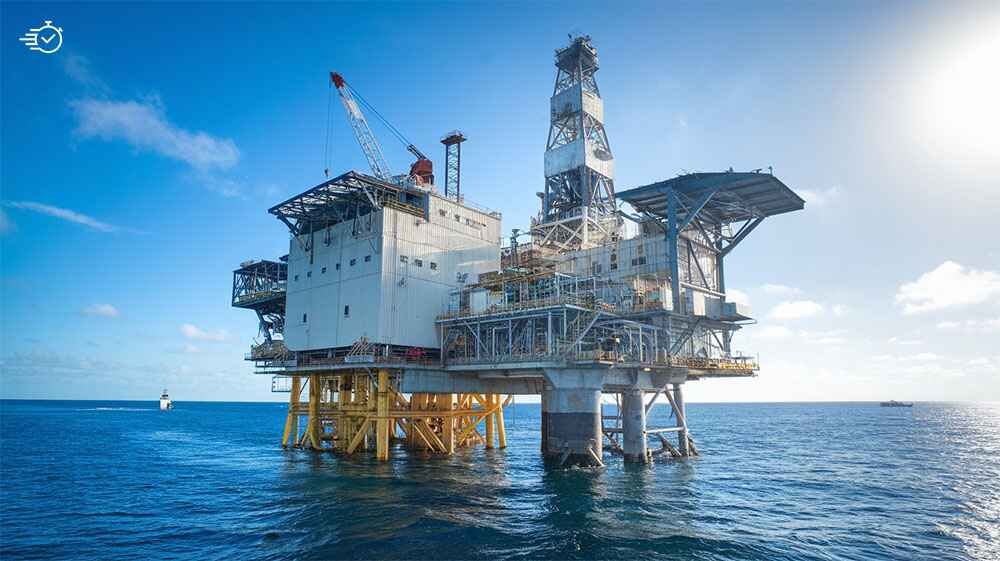Deep offshore generation is a cornerstone of modern energy and engineering, enabling the exploration and utilization of assets in the harsh and uncharted depths of the world’s oceans. This advanced generation has not simply met the growing global demand for energy but has also pushed improvements throughout diverse industries, including environmental technology, marine studies, and renewable electricity. As a multidisciplinary subject, deep offshore technology combines mechanical engineering, data science, robotics, and ecological management know-how to navigate the challenges of extracting resources from ocean depths.
The Evolution of Deep Offshore Technology
The deep offshore era has evolved extensively over many years, reflecting technological development and worldwide electricity needs.
Early Fixed Platforms (1920s–Nineteen Fifties)
The earliest offshore drilling efforts relied on fixed systems constructed on solid seabeds in shallow waters. These systems were restrained by their inability to evolve to greater depths or more complicated underwater environments. However, they inspired Destiny Offshore Engineering.
The Advent of Mobile Platforms (Sixties)
The creation of semi-submersible and jack-up rigs revolutionized offshore exploration by allowing operations in deeper waters. These rigs should circulate to various places and adapt to exceptional depths, presenting increased flexibility.
Ultra-Deepwater Exploration and Robotics (2000s)
The upward thrust of ultra-deepwater operations added demanding situations, including extreme pressure and temperature. To meet those needs, advanced robotics, self-sufficient cars, and high-power substances were developed, marking a new technology in deep offshore generation.
Key Drivers Behind the Growth of Deep Offshore Technology
Several elements have driven the exponential increase and significance of the deep offshore era:
- Addressing Energy Scarcity
As global onshore oil and gasoline reserves dwindle, offshore reserves have become integral. Deep offshore generation permits the invention and extraction of assets from previously unreachable underwater locations, helping to secure the world’s electricity supply.
- Economic Contributions
Offshore operations are essential to the worldwide economic system. They generate large employment possibilities, support related industries, and contribute to country-wide GDPs through royalties, taxes, and exports.
- Advances in Engineering and Technology
The continuous improvement of seismic imaging, robotics, and advanced sensors has transformed offshore operations. These innovations have reduced prices, superior safety, and advanced performance, making deepwater projects extra possible.
Core Components of Deep Offshore Technology
Deep offshore generation is predicated on state-of-the-art structures and systems designed to function in the toughest underwater environments. Each element plays an essential function in ensuring the success of offshore operations.
Subsea Systems
- Risers and Pipelines: High-stress pipelines join subsea wells to surface systems, transporting hydrocarbons competently over long distances.
- ROVs and AUVs: Remotely Operated Vehicles (ROVs) and Autonomous Underwater Vehicles (AUVs) carry out vital obligations like infrastructure inspections, protection, and fact-finding in environments that can be hazardous to humans.
- Manifolds: These subsea float-routing gadgets optimize the movement of hydrocarbons from multiple wells to surface facilities, ensuring operational efficiency.
Drilling Rigs
- Fixed Platforms: Used in shallow waters with stable seabeds, those systems are a cost-powerful answer for early-level exploration.
- Semi-Submersible Rigs: Floating platforms anchored to the seabed provide balance in medium-depth waters.
- Drillships: Equipped with modern drilling devices, these vessels are cells, making them best for extremely deepwater operations.
Floating Production Systems
- FPSOs (Floating Production, Storage, and Offloading devices) process hydrocarbons and store them quickly until delivery to refineries.
- SPAR Platforms: These cylindrical systems are designed for intense depths and offer unrivaled stability and efficiency.
Monitoring and Communication Systems
Sophisticated monitoring systems equipped with sensors and satellite technology provide real-time data on gadget performance and environmental conditions, allowing quick decision-making and more advantageous protection.
How Deep Offshore Technology Works
The operation of deep offshore era includes numerous complicated degrees, every requiring precision and advanced gadgets:
- Exploration
The process starts with determining potential reserves underneath the ocean floor. High-resolution seismic imaging and sonar technology assist in mapping the subsurface and pinpointing areas with high hydrocarbon capability. This level is crucial for minimizing environmental disturbances.
- Drilling
Specialized rigs are deployed to drill through the seabed, regularly achieving depths of numerous kilometers. Advanced substances, strain-managed structures, and temperature-resistant devices ensure safety and performance during drilling operations.
- Production
Once hydrocarbons are accessed, they’re extracted and processed at the website online (e.g., on FPSOs) or transported to onshore refineries through subsea pipelines. This stage requires non-stop tracking to maintain performance and protection.
- Monitoring and Maintenance
IoT-enabled gadgets, robotics, and AI play crucial functions in monitoring system health, detecting faults, and maintaining systems. These systems lessen downtime and enhance operational longevity.
Innovations Shaping the Future of Deep Offshore Technology
Deep offshore generation is at the forefront of innovation, with groundbreaking improvements reshaping the enterprise:
- Autonomous Underwater Vehicles (AUVs)
These self-guided vehicles are remodeling underwater operations. They carry out duties such as analyzing pipelines, mapping the seabed, and accumulating environmental facts without human intervention.
- AI and Predictive Analytics
Artificial intelligence is getting used to anticipating equipment disasters, optimizing drilling techniques, and improving normal efficiency. Predictive protection reduces operational dangers and costs.
- Digital Twins
By creating digital replicas of physical systems, engineers can simulate real-world situations to optimize overall performance and become aware of potential problems before they arise.
- IoT Integration
IoT-enabled sensors provide actual-time records on equipment and environmental conditions, allowing operators to make informed decisions and reply unexpectedly to any modifications.
Benefits of Deep Offshore Technology
Deep offshore technology makes sizable contributions to power protection, economic development, technological innovation, and medical studies. These blessings extend far beyond strength manufacturing, influencing several industries and international priorities.
- Energy Security
Deep offshore technology performs a vital function in meeting the ever-developing global electricity needs. With many onshore reserves nearing depletion, offshore reserves have emerged as a vital alternative. This technology allows access to untapped hydrocarbon reservoirs located underneath the sea floor, ensuring a constant supply of oil and fuel to energy industries and families worldwide. Diversifying electricity sources reduces reliance on geopolitically touchy areas, contributing to a greater solid and steady international strength marketplace.
- Economic Growth
The offshore industry is a main financial motive force in many countries, producing sizable employment opportunities and contributing to national GDPs. From skilled engineers and operators to delivery chain and logistics employees, the sector supports a huge variety of jobs. Moreover, governments benefit from royalties, export revenues, and taxes derived from offshore operations. For instance, international locations like Norway and Brazil have heavily invested in offshore infrastructure, reaping great economic rewards that bolster public offerings and infrastructure development.
- Technological Progress
The improvements that have evolved for deep offshore operations often lead to breakthroughs that have gained other industries. For example, improvements in robotics and substance science designed for harsh underwater conditions have been adapted for use in aerospace and the clinical era. The improvement of digital twins, predictive upkeep systems, and AI-pushed monitoring tools in offshore operations has also inspired comparable improvements in urban planning and disaster control.
- Marine Research
Deep offshore generation helps explore underexplored marine environments, advancing scientific know-how about the sea’s depths. Cutting-aspect tools like Autonomous Underwater Vehicles (AUVs) and remotely operated cars (ROVs) permit researchers to examine marine biodiversity, geological formations, and ecosystems. This study has led to the invention of the latest marine species, improved information on weather exchange influences, and data that inform environmental conservation efforts. Additionally, offshore exploration’s insights support the layout of more effective techniques for marine habitat safety and aid control.

Challenges in Deep Offshore Technology
Despite its blessings, the deep offshore era faces considerable hurdles:
- Environmental Risks
Oil spills and gadget malfunctions could have devastating effects on marine ecosystems. To mitigate these risks, companies specialize in preventive measures and eco-friendly technology.
- High Costs
Offshore operations require giant capital investment for infrastructure improvement, protection, and compliance with protection standards.
- Harsh Conditions
The severe pressures, temperatures, and currents of the deep sea gift ongoing challenges for gadgets and personnel.
- Regulatory Complexity
Stringent environmental and safety policies upload layers of complexity and fee to offshore tasks.
Environmental Considerations and Solutions
Environmental sustainability is becoming increasingly important for the deep offshore technology zone. Companies and regulatory bodies are prioritizing the improvement of green technologies and practices to mitigate environmental dangers and promote marine conservation.
Innovations in Spill Prevention
Oil spills constitute one of offshore operations’ most massive environmental dangers. To deal with this, organizations are investing in superior spill-prevention technologies, including:
- Blowout Preventers (BOPs): These state-of-the-art devices robotically seal a well in the event of uncontrolled strain surges, stopping oil spills.
- Real-Time Monitoring Systems: These structures use sensors and satellite TV for pc communications to locate irregular operations, permitting speedy responses to potential leaks.
- Double-Walled Pipelines: Designed to add a layer of protection, these pipelines lessen the likelihood of leaks during transportation.
Carbon Emission Reduction
Offshore operations are massive members of greenhouse gasoline emissions, typically due to the strength-in-depth nature of drilling and production sports. To fight this, businesses are imposing cleanser electricity solutions, which include:
- Electrification of Platforms: Using renewable strength sources like offshore wind generators to energy platforms, reducing reliance on diesel generators.
- Carbon Capture and Storage (CCS): Capturing CO₂ emissions throughout operations and storing them in geological formations below the seabed to save you launch into the ecosystem.
- Efficient Equipment: Upgrading to energy-efficient machinery and optimizing procedures to reduce basic emissions.
Biodiversity Conservation
Deep offshore operations regularly intersect with delicate marine ecosystems, making biodiversity conservation a top precedence. Companies and researchers are taking part to limit disruptions to aquatic habitats and promote sustainable practices:
- Marine Habitat Protection Plans: Identifying and warding off ecologically touchy areas for the duration of exploration and drilling.
- Eco-Friendly Drilling Fluids: Developing biodegradable and non-toxic fluids that decrease harm to marine lifestyles all through operations.
- Restoration Initiatives: After decommissioning offshore platforms, a few companies convert them into artificial reefs to assist marine biodiversity.
- Noise Reduction Technologies: Mitigating the impact of underwater noise pollutants from operations, which can disrupt marine animals, particularly cetaceans like whales and dolphins.
Future Trends in Deep Offshore Technology
The destiny of the deep offshore era is focused on sustainability, innovation, and efficiency:
Renewable Energy Integration
Offshore wind farms, tidal energy structures, and floating sun systems are gaining momentum as smooth-strength answers.
Advanced Robotics and AI
Robotic structures and AI will further decorate offshore operations’ efficiency, safety, and fee effectiveness.
Ultra-Deepwater Exploration
New materials and strategies permit useful resource extraction from formerly inaccessible depths, expanding worldwide electricity reserves.
Sustainability Initiatives
Technologies like carbon seizure and storage (CCS) are expected to reduce offshore operations’ environmental impact significantly.
Conclusion
Deep offshore technology represents the intersection of human ingenuity and resilience, enabling the exploration of sources and know-how in several of the most challenging environments on Earth. Its importance extends beyond electricity manufacturing, influencing monetary boom, technological innovation, and environmental sustainability. While the field faces demanding situations, excessive prices, ecological risks, and severe conditions, continuous improvements in robotics, AI, and eco-friendly technology promise a more sustainable and efficient destiny. As the worldwide power panorama evolves, deep offshore technology will remain essential to the assembly of electricity needs and advance our understanding of the marine world.
FAQs Section
What is deep offshore?
Deep offshore refers to the exploration and extraction of resources and oil and herbal fuel from ocean depths beyond 1,500 meters. This area uses superior era and engineering answers to operate in excessive underwater conditions, regularly concerning excessive pressures, freezing temperatures, and robust currents. Deep offshore operations are important for meeting international electricity demands and require specialized devices, subsea structures, drilling rigs, and floating manufacturing structures.
What is marine and offshore technology?
The Marine and offshore era encompasses the gear, systems, and approaches designed for underwater and offshore operations. This consists of oil and gas extraction technologies, renewable power manufacturing (including offshore wind farms), and marine research. The area combines mechanical engineering, robotics, and environmental and technological know-how to cope with demanding situations related to deep-sea environments, such as gadget resilience, ecological protection, and operational safety.
What are the primary uses of deep offshore technology?
Deep offshore technology is frequently used for:
- Oil and Gas Extraction: Accessing hydrocarbon reserves underneath the sea floor.
- Renewable Energy Production: Building offshore wind farms and tidal electricity systems.
- Marine Research: Studying ocean biodiversity and mapping seabeds.
- Environmental Monitoring: Using sensors and robotics to monitor ecosystems.
What demanding situations does the deep offshore era face?
Key demanding situations include:
- Environmental Risks: Oil spills and habitat disruption.
- High Costs: Significant capital funding is required for improvement and preservation.
- Harsh Conditions: Operations need to resist extreme underwater pressures and temperatures.
- Regulatory Compliance: Adhering to stringent safety and environmental policies.
How is AI utilized in deep offshore technology?
AI complements deep offshore operations by enabling:
- Predictive maintenance to foresee and save you system screw-ups.
- Real-time information evaluation for operational optimization.
- Simulations through virtual twins to improve system performance and protection.
How does deep offshore generation contribute to sustainability?
Deep offshore technology supports sustainability through:
- The development of renewable power projects, which include offshore wind farms.
- Eco-friendly technologies to reduce the environmental effect of operations.
- Carbon seizure and storage (CCS) to limit greenhouse gas emissions.
Also Checkout: Power of Busbis 1660 Disruptive Technologies: The Future of Innovation





